Table of Contents
ToggleIntroduction
If you keep yourself abreast of the recent happenings in Generative AI, you must be aware of how ChatGPT is taking the world by storm. Businesses and professionals are leveraging ChatGPT prompt engineering techniques for different purposes, including content creation, social media positioning, and customer support automation. Interestingly, ChatGPT can also write codes for embedded software.
In this blog, we will share expert tips for writing embedded software using ChatGPT. But first, let’s understand what embedded software is.
What is Embedded Software?
Exploring the Role of ChatGPT in Embedded Software Writing
Open source artificial intelligence can play a crucial role in helping you write code for embedded software. You can use ChatGPT to generate code snippets, offer insights, and answer queries related to embedded systems development. It can help embedded developers with code improvement, debugging, and algorithm implementation. Additionally, ChatGPT can provide documentation support, offer suggestions for efficient memory management, and assist in troubleshooting common issues.
READ MORE: Everything you need to know about ChaGPT 5
Tips for Writing Embedded Software with ChatGPT
Expert Tip #1 – Clear Intent and Specific Queries
To obtain accurate and relevant results, it is important to be specific and clear when interacting with ChatGPT. Providing detailed information and specific requirements yields better outcomes when seeking assistance or generating code. For instance, instead of a generic request to connect to a sensor, providing specific details like the sensor type, communication protocol, and error handling requirements can produce more accurate code suggestions. In the following example, we gave a specific prompt to the AI tool, and it gave us a detailed description of how to do it.
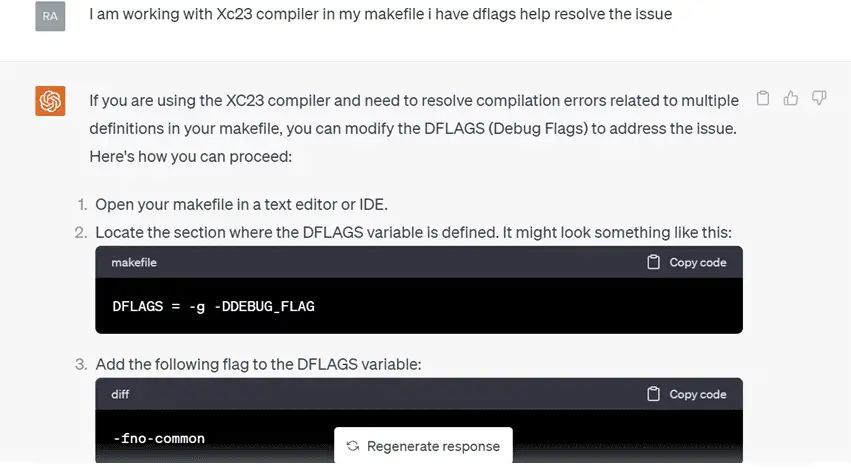
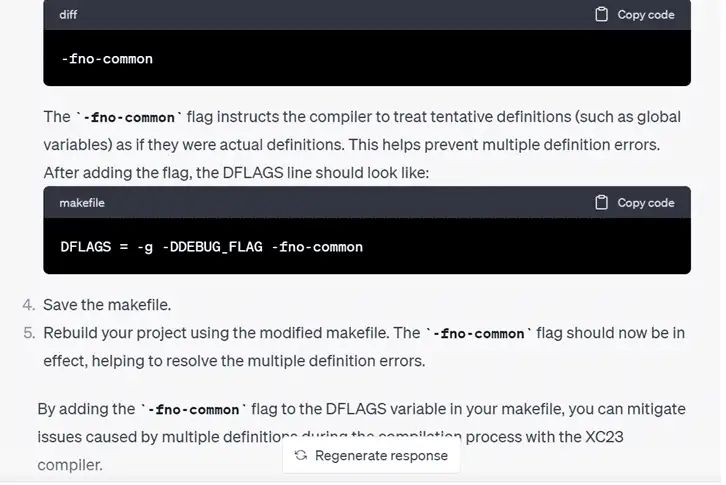
Expert Tip #2: Debugging Assistance
When encountering bugs in embedded software, developers can use ChatGPT for assistance. By providing details about the issue, developers can ask for guidance on debugging techniques or potential solutions. For example, if a developer encounters compilation errors due to multiple definitions, they can seek advice from ChatGPT on resolving the problem.

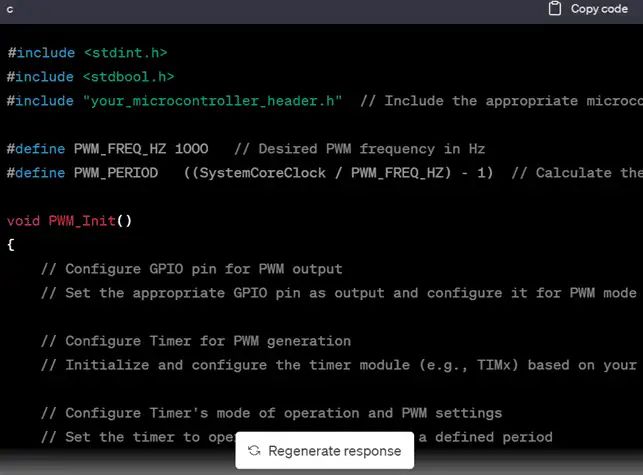
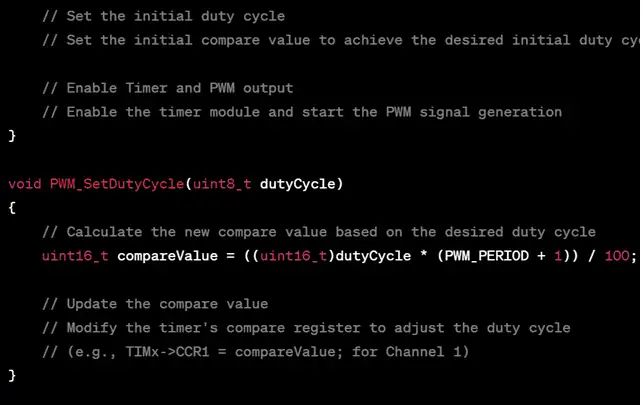
Expert Tip #3 – Error Handling Code Generation
Error handling is a critical aspect of robust embedded software development. By utilizing ChatGPT, developers can request the generation of error-handling code snippets. This helps to ensure that potential errors are addressed, making the software more resilient and reliable. It is essential to review the generated code and make any necessary modifications.
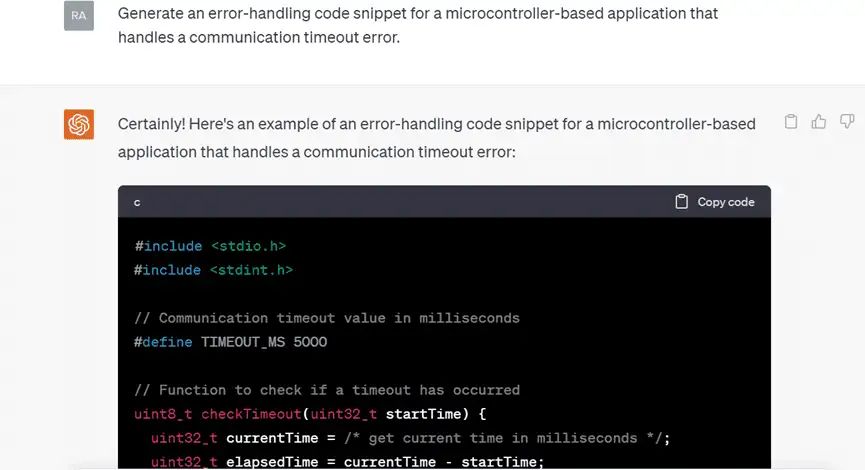
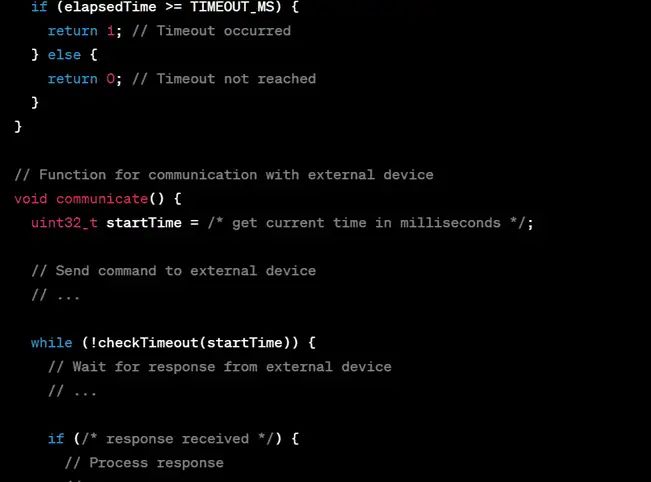
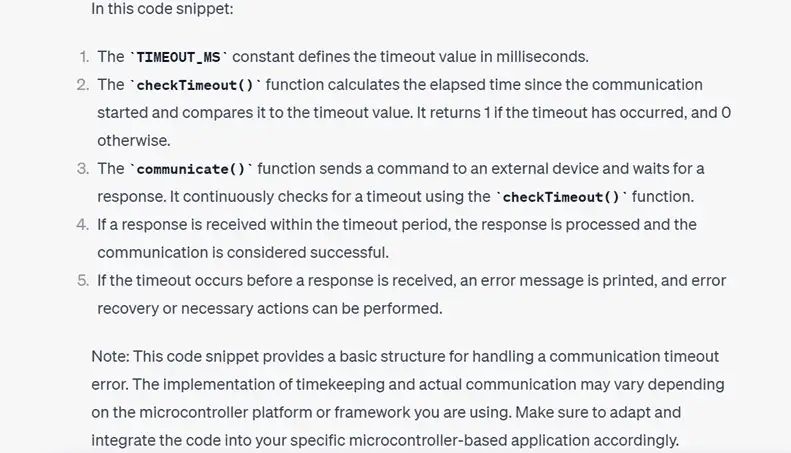
Expert Tip #4 – Iterative Interactions
Expert Tip #5 – Code Understanding and Explanations
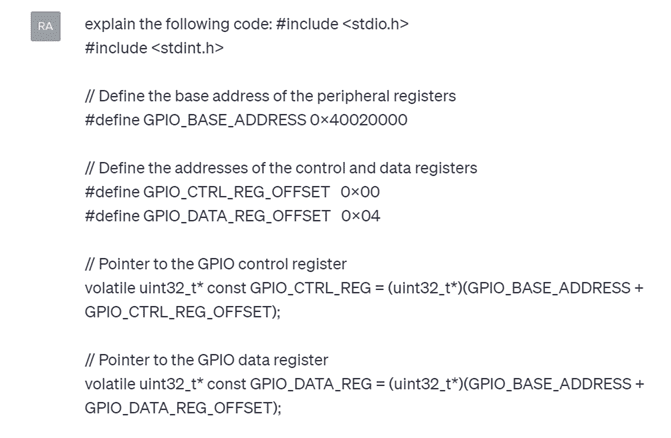
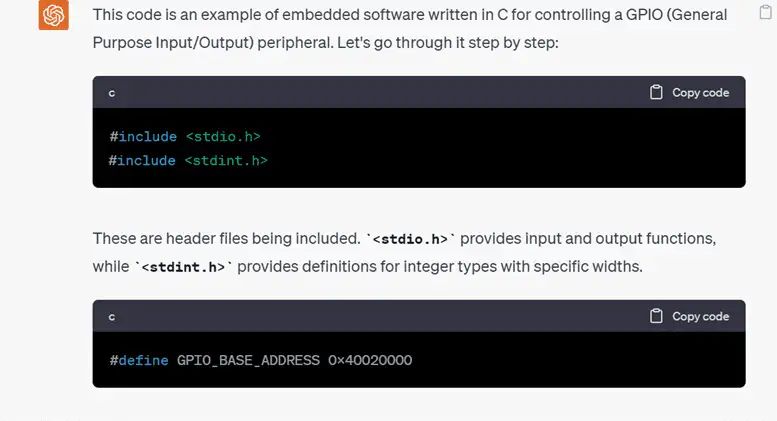
Expert Tip #6 – Code Reviews
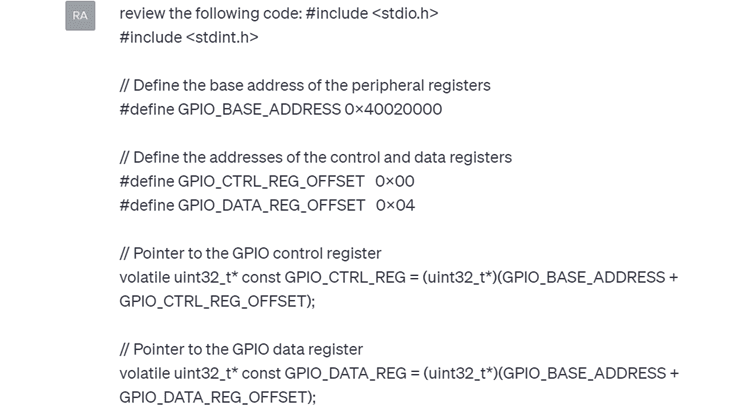
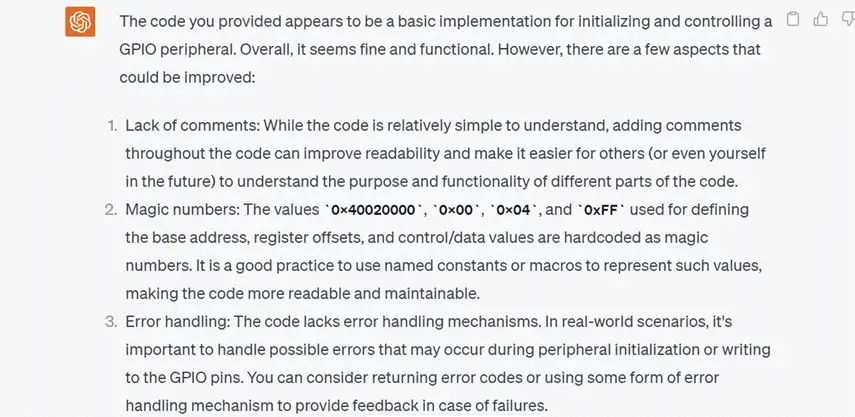
Expert Tip #7 – Verify and Test Output
Understanding the Limitations of ChatGPT in Embedded Software Writing
- While ChatGPT helps, it should not replace human expertise and validation.
- Proper review and testing of the generated code are necessary to ensure accuracy and functionality.
- It’s essential to be mindful of potential security vulnerabilities and privacy concerns when utilizing ChatGPT in embedded software development.
- Additionally, ChatGPT may struggle with comprehending complex software requirements or architecture. To maximize its benefits, it’s recommended to combine the power of ChatGPT with human expertise. This will enable more efficient software development.
- Regular updates and training with relevant data and feedback can further enhance ChatGPT’s performance in embedded software writing.

Don't miss out on your chance to work with the best!
Apply for top job opportunities today!
Concluding Thoughts
In conclusion, writing embedded software with ChatGPT can significantly help in embedded software development. The key is to follow the best practices and our expert tips to enhance productivity, speed up debugging, improve code quality, and gain insights. Using AI to generate code for embedded software can, in fact, make the entire software development process efficient. However, it is important to integrate human expertise, exercise caution, and validate the output to ensure the reliability and correctness of the AI-generated code. If you are a developer looking for exciting Open AI careers, sign up with Olibr now to learn more!
FAQs
An embedded system is a combination of software and hardware that is designed to carry out specific functions within a mechanical or electronic system.
ChatGPT comes under conversational AI within Generative AI model. ChatGPT generates human-like text responses in a conversational context.
Embedded systems can be divided into real-time embedded systems, stand-alone embedded systems, network embedded systems, and mobile embedded systems.
Take control of your career and land your dream job!
Sign up and start applying to the best opportunities!


